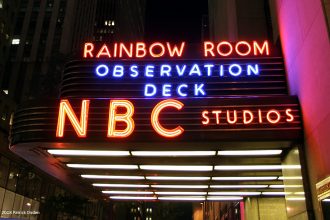Data-driven decision making. Does the phrase make you drool in anticipation? If it does, you share this Pavlovian response with the majority of modern business executives. To succeed in today’s competitive environment, a company has to know its business intelligence from its business analytics; its data drilling from its data mining; and its machine learning from its deep learning. Every action must be analyzed, optimized, maximized, and “-ized” in at least twenty other ways. If you told me that a hotdog vendor has identified the ideal mix of ketchup and mustard (hint: it’s zero ketchup) to put on their dogs using a flavour maximization algorithm, I would not be surprised. So why is it that so many companies leave one of their most impactful decisions, hiring employees out of university, almost to intuition alone? The answer may be that there is not enough relevant data to work with.
To succeed in today’s competitive environment, a company has to know its business intelligence from its business analytics; its data drilling from its data mining; and its machine learning from its deep learning.
Companies use a variety of tools to whittle down a block of candidates, like interviews, references, case studies and group exercises. All of these methods have two features in common: they involve some degree of subjectivity, and, more importantly, they have very little to do with a prospective employee’s university performance. In fact, after a GPA threshold has been met, which is used at best as a general indication of intelligence and diligence, classroom knowledge means very little to employers. This is likely because university performance hardly gives any indication at all to a recent graduate’s ability to contribute in the workplace. So you got an “A” in marketing — does that mean you will add value to the marketing department of a living, breathing company? Maybe; maybe not.
Companies figure that if there is no relevant historical performance to analyze, then their best bet is to evaluate candidates based on current observation. So they have devised assessments that highlight raw talents like communication and problem solving ability. They look for potential, not past production, because they know that they are going to have to teach new employees work specific skills anyway.
Managers often get the chance to stage only a few interviews or case studies before making a decision, and in such a small sample, anything can happen. HR staff may have excellent intuition, but there is no question that the process would be made more efficient with the presence of relevant historical performance. To put it simply, the right person for the job would be chosen more often if employers had a better idea what the applicant was capable of.
To call attention to the difficulties a lack of historical information creates, let’s compare a company hiring a recent university graduate to a professional sports team drafting a collegiate player. In both instances, management must select an individual from a large class of talented prospects, and in both instances mistakes lead to large losses in the organization (although, much to the disappointment of university students everywhere, a lot more money is wasted on a blown draft pick).
So you got an “A” in marketing — does that mean you will add value to the marketing department of a living, breathing company? Maybe; maybe not.
In a professional sports draft, front offices choose players based on their draft combine, their interview, and their collegiate level of play. The draft combine measures how fast they can run and how high they can jump; in other words, their raw athletic talent. The interview gives teams a sense of the player’s personality, goals, and mentality. Both of these evaluations are important, but by far the most relevant information about a prospect is their past in-game performance. The level of competition might be different at the junior level, but the mechanics of the game are the same, so teams can project past production onto future performance.
Coaches and general managers would faint if you told them they had to pick players based on the combine alone, and yet recruitment executives find themselves in that very situation. There is no past performance to analyze. The school “game” and the working “game” are too different, and until the content of a university degree is changed, this imbalance in the hiring process will persist.
So how can schools adjust to better meet the needs of both students and recruiters?
For most degrees, you cannot just throw away the theoretical base, but perhaps the theory can be condensed to make room for the practical. Co-op programs are a good start. They allow some balance between practical work experience, which can be evaluated by future employers, and classroom learning. This type of university program is becoming more popular, and companies are expanding their participation as well. Maybe companies themselves could partner more closely with university programs to train students in the skills they value most.
Overall, this question is a big one, and, ironically, requires an answer from someone with a lot more university degrees than me.


